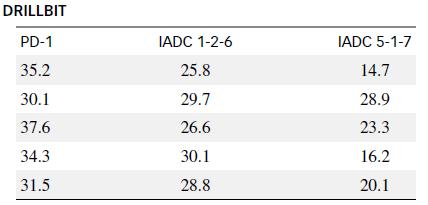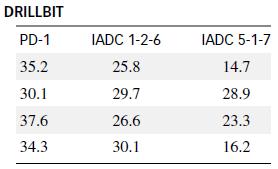Refer to Exercise 14.81 and the study to compare the speeds of three drill bits. Recall that
Question:
Refer to Exercise 14.81 and the study to compare the speeds of three drill bits. Recall that five drilling sites were randomly assigned to each bit, and the rate of penetration (RoP) in feet per hour was recorded after drilling 3,000 feet at each site. Based on the information given in the table, can you conclude that the RoP probability distributions differ for at least two of the three drill bits? Test at the α = .05 level of significance.

Data from Exercise 14.81
As oil drilling costs rise at unprecedented rates, the task of measuring drilling performance becomes essential to a successful oil company. One method of lowering drilling costs is to increase drilling speed. Researchers at Cities Service Co. have developed a drill bit, called the PD-1, which they believe penetrates rock at a faster rate than any other bit on the market. It is decided to compare the speed of the PD-1 with the two fastest drill bits known, the IADC 1-2-6 and the IADC 5-1-7, at 12 drilling locations in Texas. Four drilling sites were randomly assigned to each bit, and the rate of penetration (RoP) in feet per hour (fph) was recorded after drilling 3,000 feet at each site. The data are given in the table. Can Cities Service Co. conclude that the mean RoP differs for at least two of the three drill bits? Test at α = .05. If appropriate, rank the treatment means using a multiple comparisons procedure.

Step by Step Answer:

Statistics For Engineering And The Sciences
ISBN: 9781498728850
6th Edition
Authors: William M. Mendenhall, Terry L. Sincich





